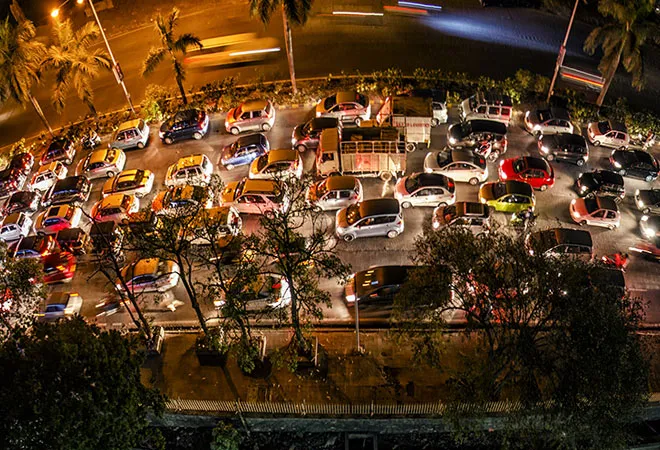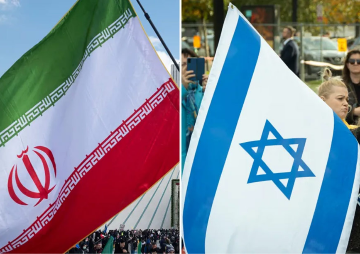
TomTom, a Dutch multinational company specialising in location technology and consumer electronics, came out with its annual global survey results of traffic congestion called Traffic Index ranking in January. This survey covered 416 cities across 57 countries and 6 continents. Its methodology is to “calculate the baseline per city by analyzing free-flow travel times of all vehicles on the entire road network – recorded 24/7, 365 days a year.” TomTom performs calculations for all hours of each day so that an idea can be had about “congestion levels at any time in any city, including morning and evening peak hours”. The results are captured in percentage terms. For instance, if the results show a 50 percent congestion level in a city at a specific time, it means that a trip will take 50 percent more time than the baseline uncongested conditions of that city.
Only four cities figure from India – Bengaluru, Mumbai, Pune and New Delhi figured in this list. And all of them are ranked in the first ten most congested cities. Bengaluru tops the global list with 71 percent congestion level. Mumbai is fourth with a congestion level of 65 percent, Pune fifth (59 percent) and Delhi eighth (56 percent). Manila, Bogota, Moscow, Lima, Istanbul and Jakarta make the other cities in the top ten. If we take a three-year overview, Mumbai and Delhi have done better in 2019 than in 2017 and 2018. Mumbai and Delhi ranked first and second in terms of congestion levels in 2017 and first and fourth in 2018 respectively. Bengaluru and Pune did not figure in the top ten in either of those years. An off the cuff conclusion would be that Mumbai and Delhi have taken steps to control congestion whereas Bengaluru and Pune have had less success in the area. A surprising inclusion in the top ten is Bogota, one of the pioneers of the Bus Rapid Transit System (BRTS) that it championed across the world. Sadly, it does not seem to have helped the city in alleviating its traffic congestion.
Since such congestion is economically regressive, environmentally hazardous and psychologically traumatic, there is no doubt that steps should be taken to avoid congestion as far as possible. The reasons for it in a specific city could be many and diverse. However, the author does not wish to reload solutions that were advanced in an earlier article titled “Non-infrastructure solutions to urban traffic congestion” which the readers may refer. Those antidotes have great value and may surely be tried out by cities. The objective here, however, is to look at certain central flaws in urban land use planning that are especially relevant in our context and that do serious, long-term damage to the mobility of cities.
Most Indian cities are notoriously economical in allocating land for road and transportation. London, Tokyo and New York, for instance, have 24.1 percent, 14.9 percent and 16.6 percent of their city area under roads. In India, Delhi is the only city with a comparable percentage (18 percent). But most other Indian cities do not cross the 10 percent mark. To make the situation worse, part of the roads is occupied by parked vehicles and street vendors. Since most Indian cities have service lines going under the roads, frequent digging takes place for repair, maintenance and expansion of services. Hence, despite the vehicle numbers being much smaller per capita compared to western cities, congestion turns out to be much higher.
Most Indian cities are notoriously economical in allocating land for road and transportation. London, Tokyo and New York, for instance, have 24.1 percent, 14.9 percent and 16.6 percent of their city area under roads
The second factor is population density. Mumbai is close to being the densest city in the world with about 30,000 persons per sq.km. India’s other large cities are very dense in comparison with international standards and getting denser. This forces space allocation to priority amenities such as housing, shopping, schools, hospitals and entertainment. This in turn leads to a depletion of open spaces and the struggle to find space for vehicular parking, increasing thereby the pressure on roads and adversely affecting city mobility.
An equally significant factor is the deficits in proper mixed land use planning. A well-considered, mixed land use planning requires suitable housing across socio-economic groups, shopping for frequently needed items, schools, hospitals, offices and commercial establishments planned in smaller neatly divided areas of the city. This would encourage pedestrian and cycle trips and reduce the need for personal motorised vehicles since distances to essential services and amenities are at walking or cycling distance. However, all these decisions are left to the market which prices out space for the poor and diverts services towards the rich and higher middle classes and towards more profitable ventures. This prevents considerations of providing services for all.
The lack of public transport in India’s megacities went unnoticed for almost five decades after independence. This incentivised the inflow of private transport vehicles. The country woke up from its slumber after the situation became nightmarishly difficult and then essayed huge steps to bridge their growing public transport deficit. In the last few decades, feverish activity has begun on city roads to build metro systems and bus rapid transit systems. In many cities these are being built right in the centre of city thoroughfares for lack of space and other alternatives. Their completion will take time before their mass use could begin. In the interim they are a drag on traffic and are making their own contribution to traffic congestion. Along with the metros, as Indian cities get more populated, other infrastructure works also need to be taken up. Hence, more water and sewerage network, more housing and commerce, more viaducts, bridges and underpasses are constantly being added. These have further added to traffic congestion.
In Indian cities, total pedestrian trips are, in general, much higher than all other modes of travel. However, they find little encouragement in the layout of the city. Most cities try to make do with narrow strips of roads as footpaths that are difficult to walk on. Cycling on the other hand is highly unsafe as there are no separate cycle tracks and cyclists must negotiate their distances in the company of cars and trucks that speed past them. Cyclists getting knocked down on city roads is a frequent tragedy that citizens must contend with.
Most cities try to make do with narrow strips of roads as footpaths that are difficult to walk on. Cycling on the other hand is highly unsafe as there are no separate cycle tracks and cyclists must negotiate their distances in the company of cars and trucks that speed past them
Given the cited factors that are common in Indian cities, a fundamental relook at the spatial plan of transport is the beginning of the solution. Since the socio-economic profile of our cities is very diverse, our travel patterns in cities are multi-modal, covering all variety of vehicles. And since multiple uses are made of roads, it is imperative that a much larger percentage of city land must be earmarked for transportation. A maximum human density also needs to be prescribed by taking a considered call on the carrying capacity of cities. Once that density is reached, construction activities should be disincentivised. The provision of separate cycle tracks and pedestrian pathways need to be planned to encourage people to use these environment-friendly modes of travel. This would be further encouraged through an appropriately designed mixed land use plan and public transportation networks. These are vital planning tools that could improve mobility in cities and reduce traffic congestion. Urbanisation in this country has a long way to go. Attention to these facts will likely yield better planned and mobile cities.
The views expressed above belong to the author(s). ORF research and analyses now available on Telegram! Click here to access our curated content — blogs, longforms and interviews.




 PREV
PREV


